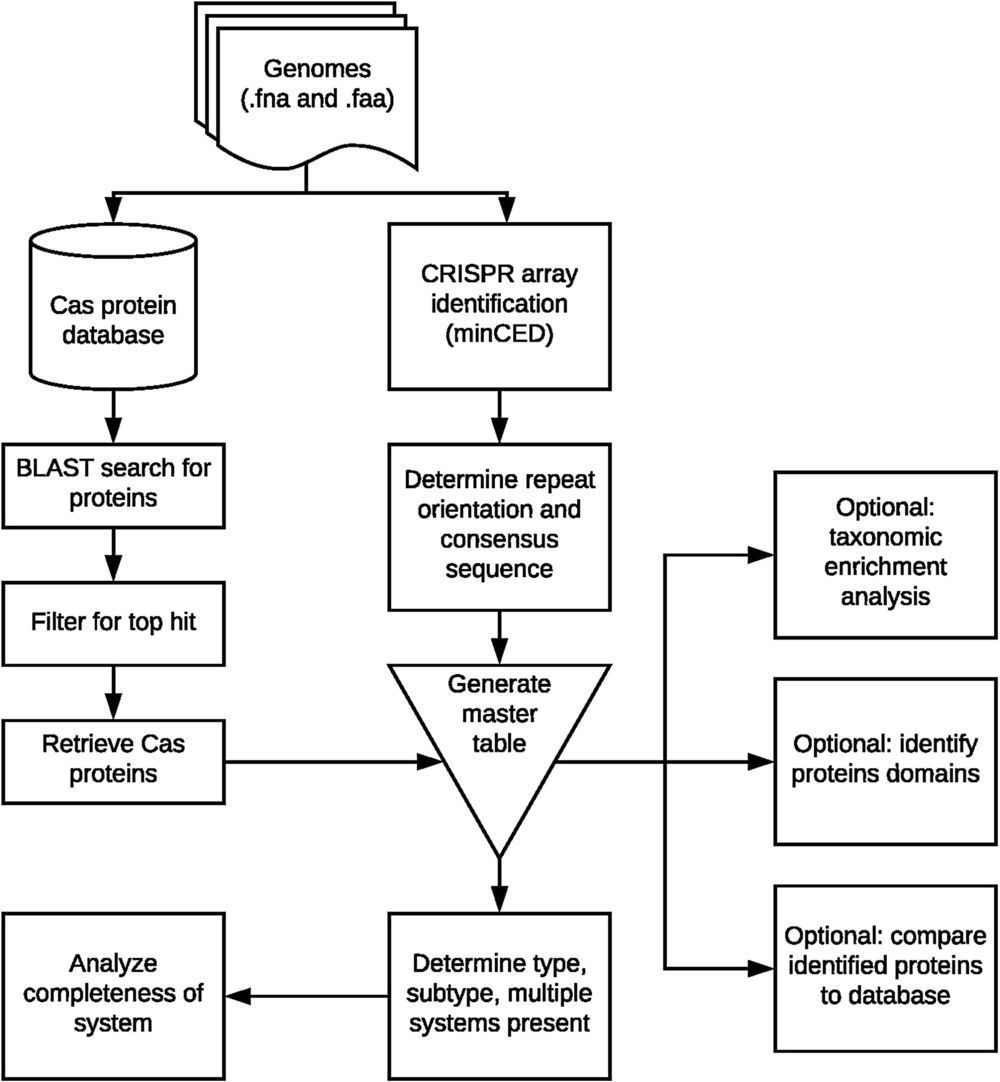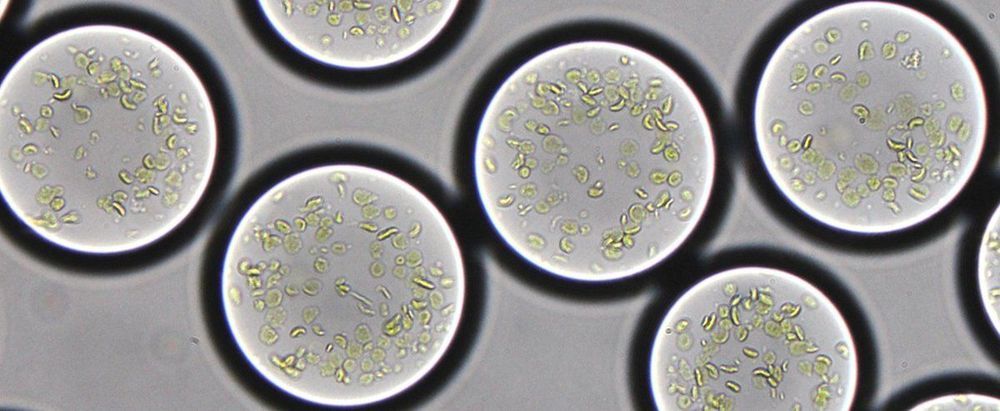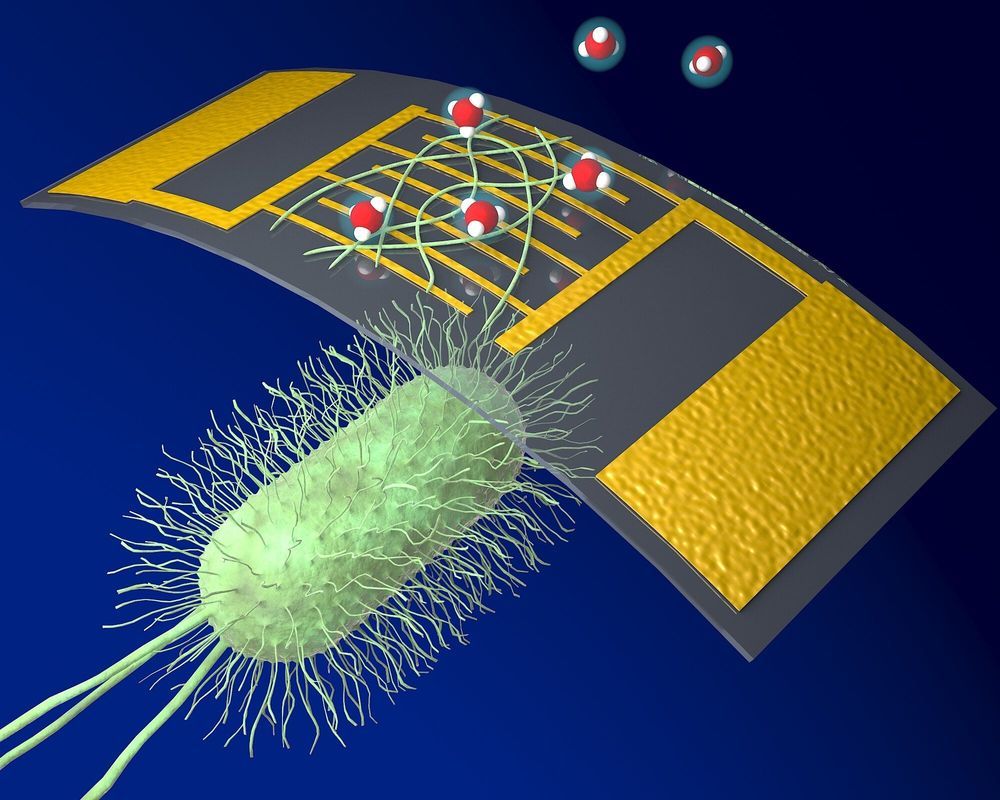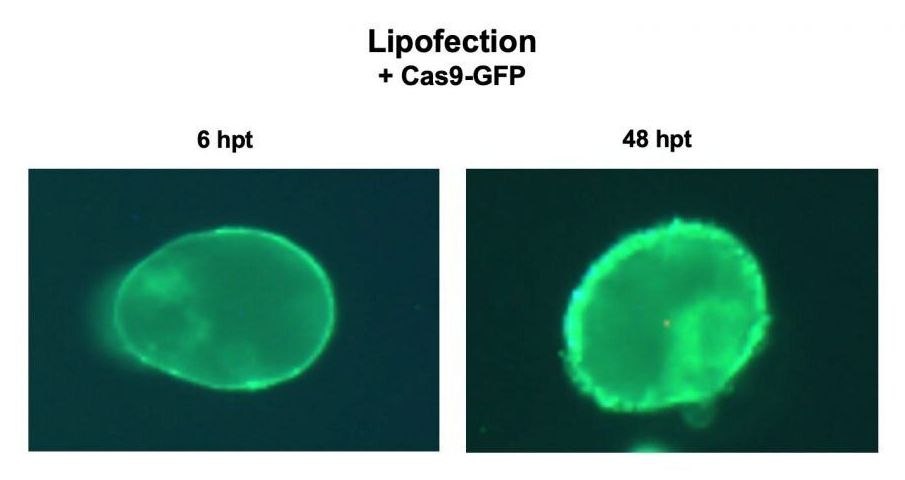Category: food – Page 232
This Lickable Screen Can Recreate Almost Any Taste or Flavor Without Eating Food
No matter how they may make you feel, licking your gadgets and electronics is never recommended. Unless you’re a researcher from Meiji University in Japan who’s invented what’s being described as a taste display that can artificially recreate any flavor by triggering the five different tastes on a user’s tongue.

Forget Exercise—These Mice Got Ripped With Gene Therapy
A gene therapy trial performed on mice may foreshadow yet another way to hack fitness. In a study done by a team at Washington University in St. Louis’ medical school, mice quickly built muscle mass and reduced obesity after receiving the therapy, even while eating a diet high in fat and not exercising. The results were published last week in a paper in Science Advances.
The gene targeted was FST, which is responsible for making a protein called follistatin. In humans and most other mammals, follistatin helps grow muscle and control metabolism by blocking a protein called myostatin, which acts to restrain muscle growth and ensure muscles don’t get too big.
The researchers injected eight-week-old mice with a virus carrying a healthy FST gene (gene therapy involves adding healthy copies of a gene to cells, usually using a virus as a deliveryman).
Over a period of 18 weeks, or about 4 months, the team observed that the muscle mass of the treated mice more than doubled, as did their strength level. They also experienced reduced damage related to osteoarthritis, less inflammation in their joints, and had healthier hearts and blood vessels than mice that didn’t receive the gene therapy —even though all the mice ate the same high-fat diet and did the same amount of exercise.

CRISPRdisco: An Automated Pipeline for the Discovery and Analysis of CRISPR-Cas Systems
Circa 2018
CRISPR-Cas adaptive immune systems of bacteria and archaea have catapulted into the scientific spotlight as genome editing tools. To aid researchers in the field, we have developed an automated pipeline, named CRISPRdisco (CRISPR discovery), to identify CRISPR repeats and cas genes in genome assemblies, determine type and subtype, and describe system completeness. All six major types and 23 currently recognized subtypes and novel putative V-U types are detected. Here, we use the pipeline to identify and classify putative CRISPR-Cas systems in 2,777 complete genomes from the NCBI RefSeq database. This allows comparison to previous publications and investigation of the occurrence and size of CRISPR-Cas systems. Software available at http://github.com/crisprlab/CRISPRdisco provides reproducible, standardized, accessible, transparent, and high-throughput analysis methods available to all researchers in and beyond the CRISPR-Cas research community. This tool opens new avenues to enable classification within a complex nomenclature and provides analytical methods in a field that has evolved rapidly.
CRISPR-Cas* bacterial and archaeal immune systems remain of high interest across many domains of the life sciences, including food science, molecular biology, prokaryotic evolution, and as a technology from pharma to next-generation crops.1–4 The unifying interest in CRISPR is the tremendous wealth of applications this technology affords. While application and tool development using a handful of characterized CRISPR-Cas systems has exploded, the annotation and discovery of systems remains an ongoing challenge for microbiologists and bioinformaticians to solve. The ability to identify CRISPR-Cas systems can benefit the greater scientific community, from microbiologists attempting to learn about adaptive immunity in prokaryotes, to molecular biologists interested in harnessing the nucleic acid-targeting functions of various Cas proteins.

Intriguing Genetics That Flipped the Food Chain to Allow Carnivorous Plants to Hunt Animals
Plants can produce energy-rich biomass with the help of light, water and carbon dioxide. This is why they are at the beginning of the food chains. But the carnivorous plants have turned the tables and hunt animals. Insects are their main food source.
A publication in the journal Current Biology now sheds light on the secret life of the green carnivores. The plant scientist Rainer Hedrich and the evolutionary bioinformatician Jörg Schultz, both from Julius-Maximilians-Universität (JMU) Würzburg in Bavaria, Germany, and their colleague Mitsujasu Hasebe from the University of Okazaki (Japan) have deciphered and analyzed the genomes of three carnivorous plant species.
They studied the Venus flytrap Dionaea muscipula, which originates from North America, the globally occurring waterwheel plant Aldrovanda vesiculosa and the spoon-leaved sundew Drosera spatulata, which is widely distributed in Asia.

Researchers develop an artificial chloroplast
Over billions of years, microorganisms and plants evolved the remarkable process we know as photosynthesis. Photosynthesis converts sun energy into chemical energy, thus providing all life on Earth with food and oxygen. The cellular compartments housing the molecular machines, the chloroplasts, are probably the most important natural engines on earth. Many scientists consider artificially rebuilding and controlling the photosynthetic process the “Apollo project of our time.” It would mean the ability to produce clean energy—clean fuel, clean carbon compounds such as antibiotics, and other products simply from light and carbon dioxide.
But how to build a living, photosynthetic cell from scratch? Key to mimicking the processes of a living cell is to get its components to work together at the right time and place. At the Max Planck Society, this ambitious goal is pursued in an interdisciplinary multi-lab initiative, the MaxSynBio network. Now the Marburg research team led by director Tobias Erb has succeeded successfully created a platform for the automated construction of cell-sized photosynthetically active compartments, “artificial chloroplasts,” that are able to capture and convert the greenhouse gas carbon dioxide with light.

YC startup Felix wants to replace antibiotics with programmable viruses
This could essentially in the wrong hands be very bad but in the positive ways it could cure anything.
Right now the world is at war. But this is no ordinary war. It’s a fight with an organism so small we can only detect it through use of a microscope — and if we don’t stop it, it could kill millions of us in the next several decades. No, I’m not talking about COVID-19, though that organism is the one on everyone’s mind right now. I’m talking about antibiotic-resistant bacteria.
You see, more than 700,000 people died globally from bacterial infections last year — 35,000 of them in the U.S. If we do nothing, that number could grow to 10 million annually by 2050, according to a United Nations report.
The problem? Antibiotic overuse at the doctor’s office or in livestock and farming practices. We used a lot of drugs over time to kill off all the bad bacteria — but it only killed off most, not all, of the bad bacteria. And, as the famous line from Jeff Goldblum in Jurassic Park goes, “life finds a way.”

A new, highly sensitive chemical sensor uses protein nanowires
Writing in the journal NanoResearch, a team at the University of Massachusetts Amherst reports this week that they have developed bioelectronic ammonia gas sensors that are among the most sensitive ever made.
The sensor uses electric-charge-conducting protein nanowires derived from the bacterium Geobacter to provide biomaterials for electrical devices. More than 30 years ago, senior author and microbiologist Derek Lovley discovered Geobacter in river mud. The microbes grow hair-like protein filaments that work as nanoscale “wires” to transfer charges for their nourishment and to communicate with other bacteria.
First author and biomedical engineering doctoral student Alexander Smith, with his advisor Jun Yao and Lovley, say they designed this first sensor to measure ammonia because that gas is important to agriculture, the environment and biomedicine. For example, in humans, ammonia on the breath may signal disease, while in poultry farming, the gas must be closely monitored and controlled for bird health and comfort and to avoid feed imbalances and production losses.

CRISPR plants: new non-GMO method to edit plants
An NC State researcher has developed a new way to get CRISPR/Cas9 into plant cells without inserting foreign DNA. This allows for precise genetic deletions or replacements, without inserting foreign DNA. Therefore, the end product is not a genetically modified organism, or GMO.
CRISPR/Cas9 is a tool that can be used to precisely cut and remove or replace a specific genetic sequence. The Cas9 protein serves as a pair of molecular scissors, guided to the specific genetic target by an easily swapped RNA guide. Basically, it seeks out a specific genetic sequence and, when it finds that sequence, cuts it out. Once the target DNA is snipped, it can be deleted or replaced.
The CRISPR/Cas9 system has tremendous potential for improving crops by changing their genetic code. That does not necessarily mean inserting foreign DNA, but the systems used to deliver CRISPR/Cas9 into a plant’s cells often do, which means the relevant crop is a GMOs undergo through a rigorous evaluation process and many consumers prefer non-GMO products.
Hungry monkeys brawl over food as coronavirus hits tourism in Thailand
A large crowd of monkeys has been filmed brawling over a pot of yoghurt in a street in Thailand. A fall in tourist numbers amid the Covid-19 outbreak has resulted in far fewer people offering them food. The video was filmed in Lopburi, a city north-east of Bangkok that is famed for its monkey population
How to stop the spread of coronavirus ► https://www.youtube.com/watch?v=3jpXAMwRSu4
Support the Guardian ► https://support.theguardian.com/contribute
Today in Focus podcast ► https://www.theguardian.com/news/series/todayinfocus
The Guardian YouTube network:
The Guardian ► https://www.youtube.com/theguardian